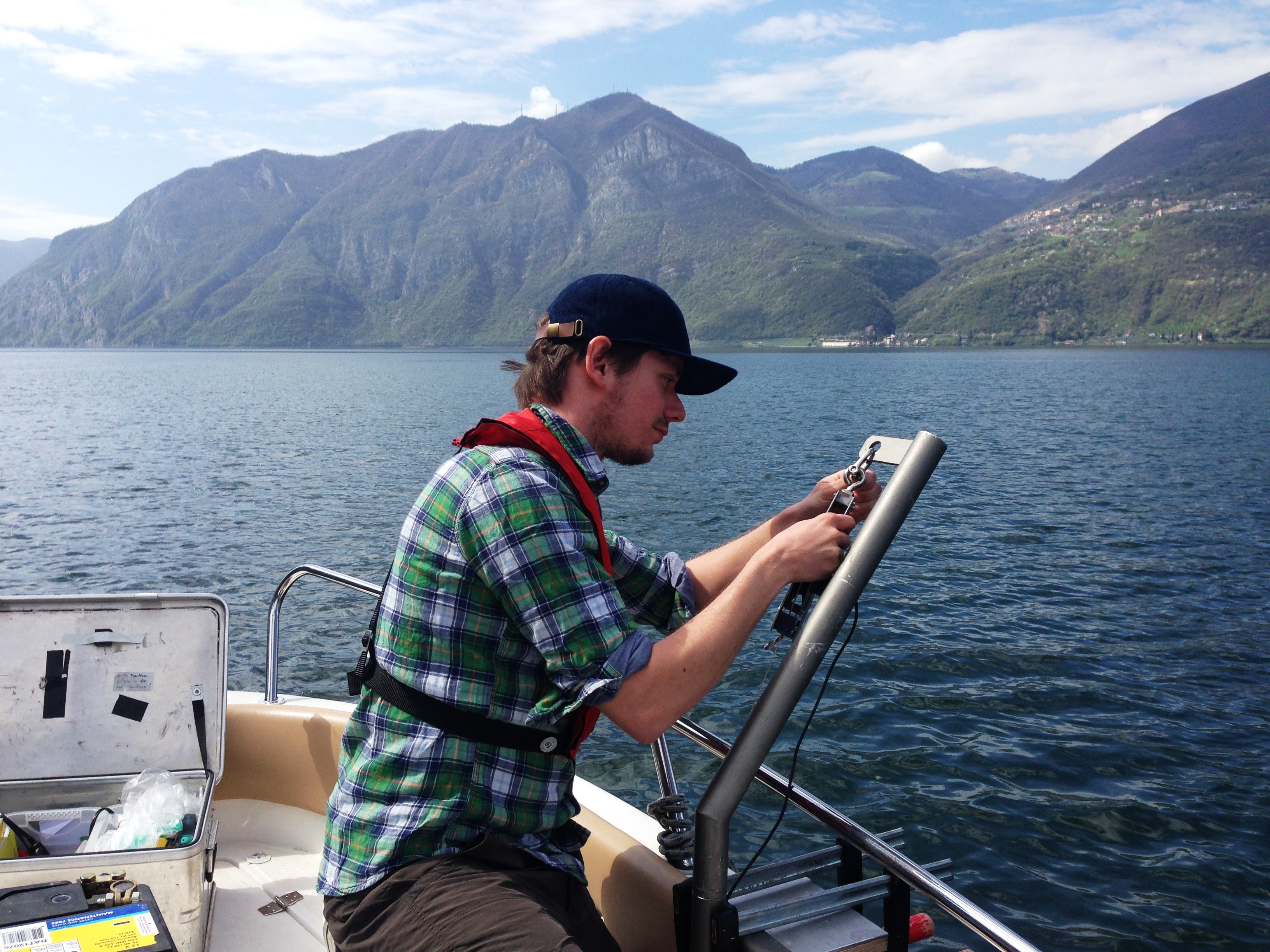Research
My limnological research focuses on three main aspects: (i) understanding long-term dynamics of aquatic ecosystems, (ii) developing open-access scientific software and tools, and (iii) improving modeling code and algorithms built on state-of-the-art theory. Most my research is based on my belief that aquatic ecosystem models are important tools for teaching physical as well as ecological in-lake processes, are crucial to check hypotheses obtained by field data and should be made accessible to every limnologist, the stakeholders as well as the public regardless of computational power and computer science education.
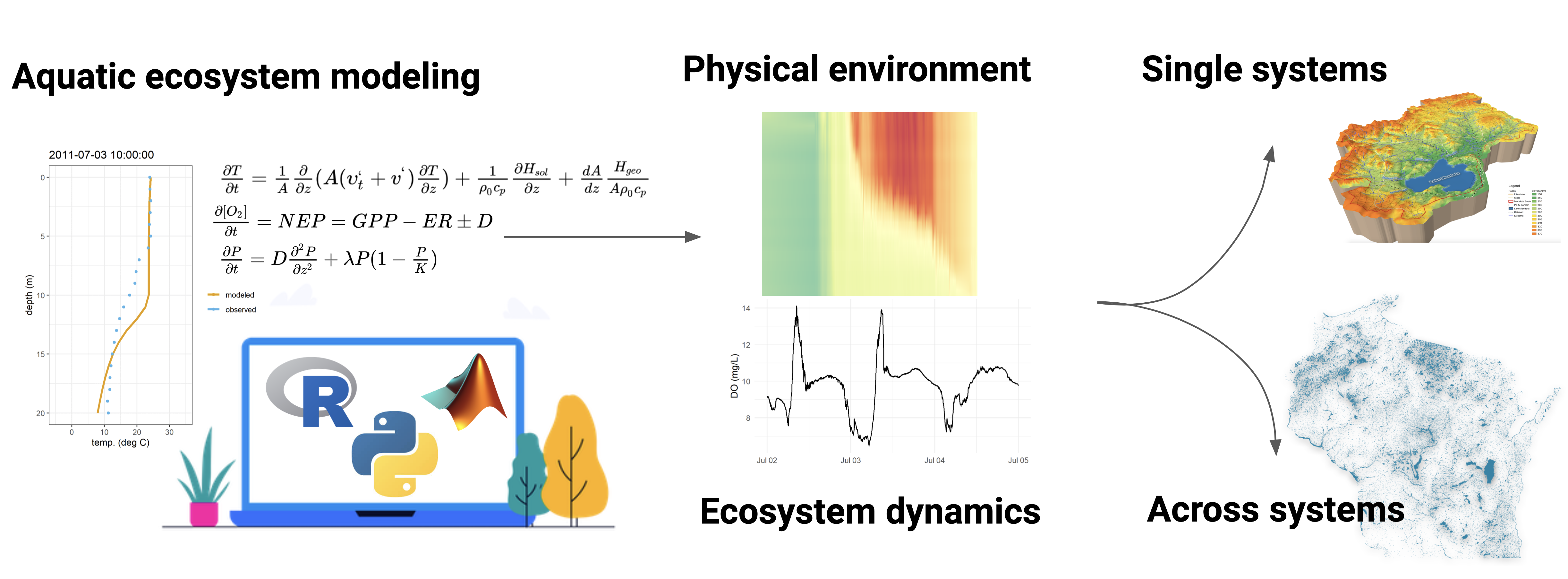
(i) Aquatic ecosystem dynamics
I am particularly interested in how interacting abiotic and biotic processes reshape aquatic ecosystems, so as to inform management and stakeholder decisions. I have already gained significant experience at the local-scales by using in situ data and process-based models to analyze management scenarios for various lakes and reservoirs to aid local stakeholders and managers to develop water management contingency plans. On the global scale, in the scope of the Inter-Sectoral Impact Model Intercomparison Project (ISIMIP), we quantified the impact of climate change on future lake phenology using an ensemble of models and terabytes of data, which will potentially guide future political decisions. More recently, my research has focused on understanding anoxia in lakes as an emergent ecosystem property by quantifying drivers of lake metabolism. Although physical factors shape the seasonal phenology of lakes, this work highlighted that biological variables drive long-term change. These theoretical considerations can support local lake management plans in guiding anoxia mitigation strategies.
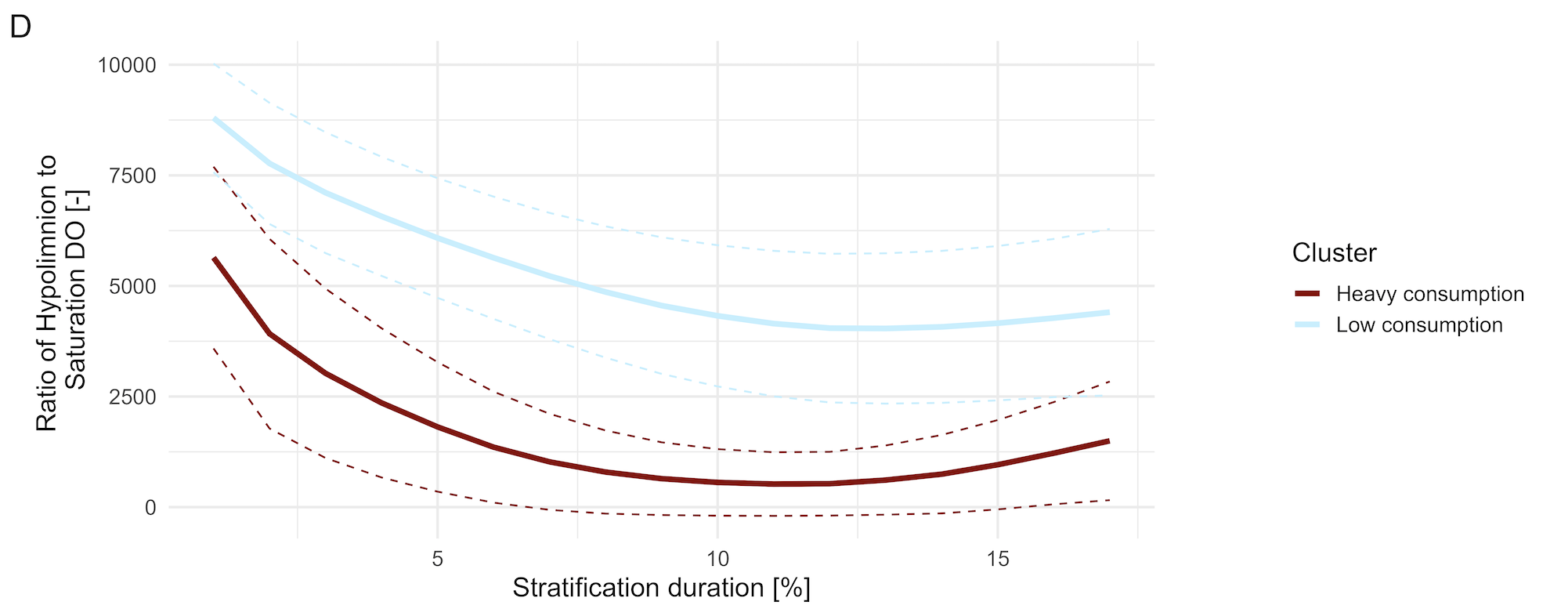
(ii) Scientific software development
My recent projects deal with simplifying the application of models for novice users, i.e. adding custom optimization algorithms to glmtools or providing a simple lake food web model for teaching purposes inside the R scripting language (thermod). To facilitate lake ensemble modeling, I co-lead the development of LakeEnsemblR-package, which runs five different lake models inside a common framework. Establishing LakeEnsemblR as an accessible framework will allow users to configure lake models in a reproducible way and to quantify structural uncertainties as well as provide further uncertainty around projections. LakeEnsemblR is already used in diverse research projects ranging from evaluating the effect of salt water intrusions on spring mixing in urban lakes to the long-term impact of climate change on lake ice formation in a drinking water reservoir. The figure below shows how different vertical 1D hydrodynamic lake models can give different water temperature projections for the same input data.
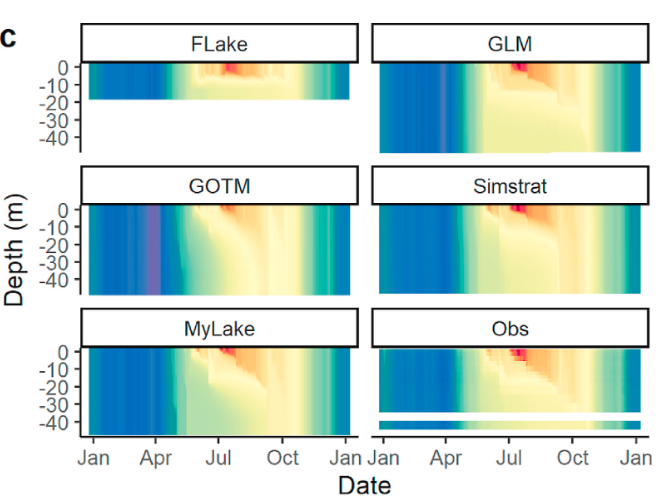
As part of the ABI project (funded by NSF), I am working on developing tools for the GLM-AED2 modeling suite to make it more robust and accessible. The vertical 1D GLM features a flexible Lagrangian grid as well as an energy balance approach for surface layer mixing. Due to its fair computational needs and low requirements for boundary conditions (bathymetry, initial temperature profile and meteorological conditions), GLM is a great choice for first-time modelers as well as experienced users. Here’s an animation showing how a flexible Lagrangian layer structure of a vertical hydrodynamic model (GLM) is working. The thickness of each layer is either expanding or shrinking in dependence of its density which further depends on the mixing dynamics. Especially surface cooling events in the evening and at night are causing convective fluxes that deepen the surface mixed layer.
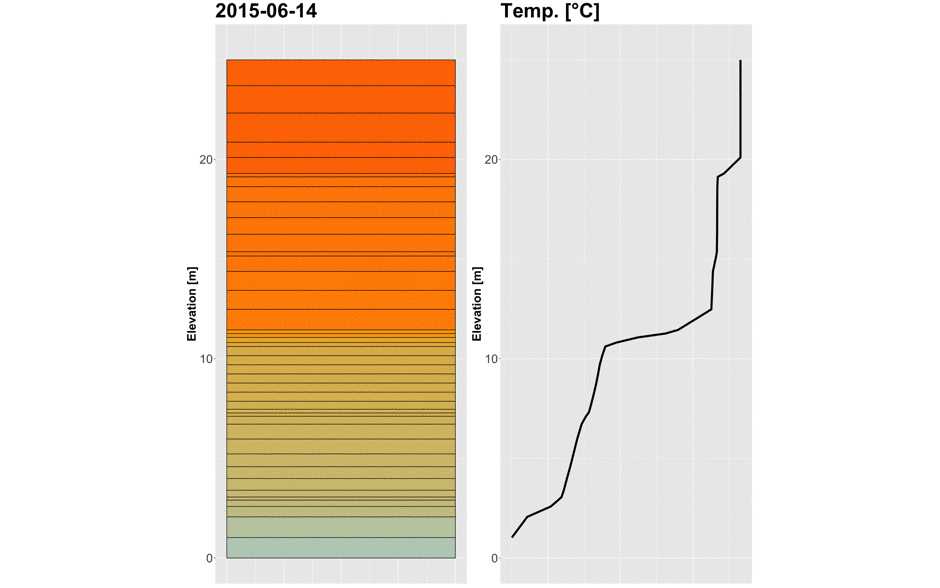
(iii) Modeling advancement
My focus is on coupling process-based models with deep learning algorithms. Recent knowledge-guided machine learning (KGML) models rely on Long Short-Term Memory (LSTM) networks to replicate autocorrelative ecological processes, physical constraints, as well as pretraining using simulated output from process-based models. Recent studies have highlighted how these KGML models outperform state-of-the-art process-based models, and could theoretically revolutionize our applications of aquatic ecosystem models. I am currently in the process of modifying the KGML design as part of an interdisciplinary team. Here, we are using the paradigm of modular compositional learning to substitute individual sub-components either with process-based or deep learning models. First results highlight how such a hybrid MCL model also outperforms both process-based models and alternative deep learning models.
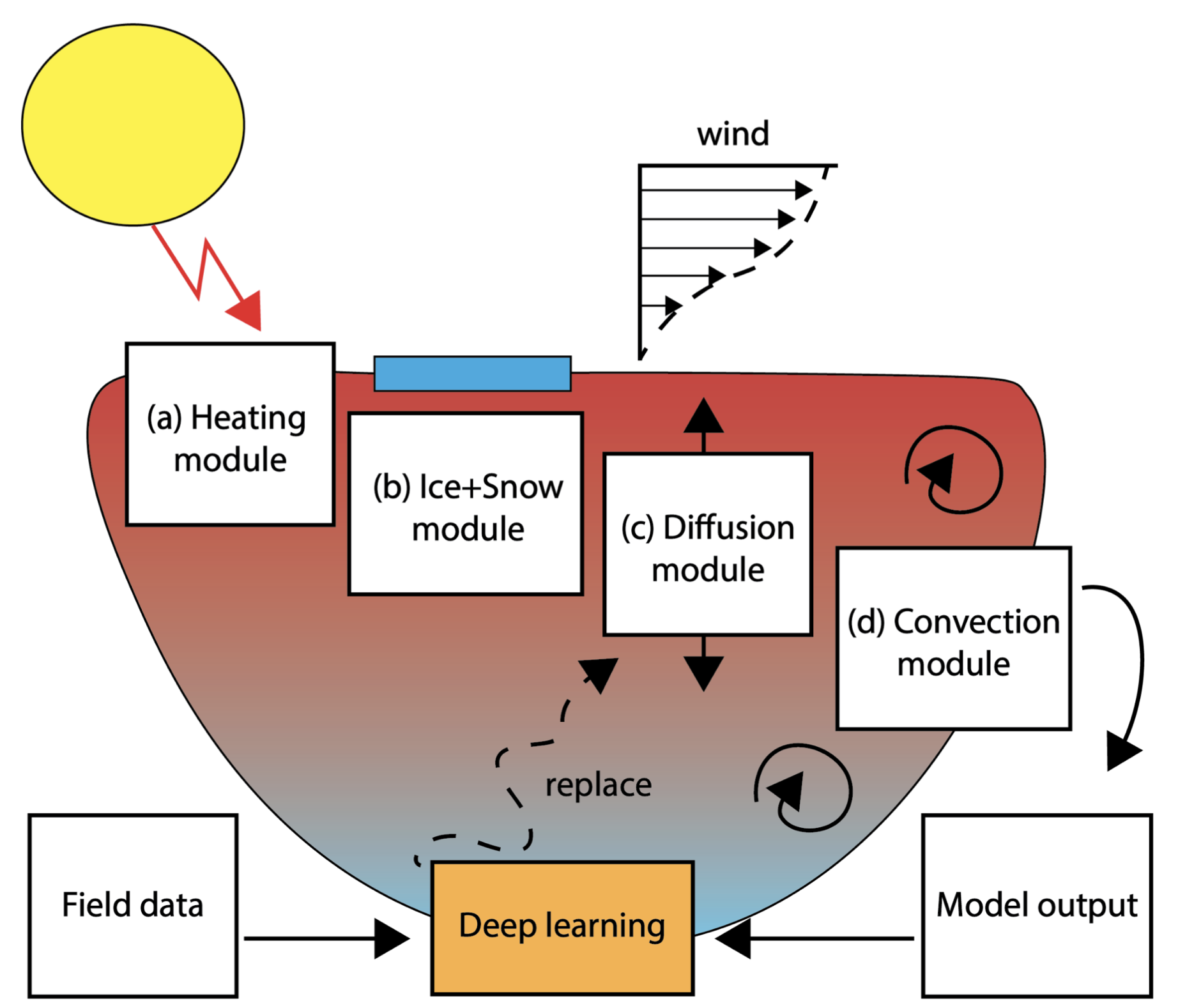
A recent focus of my work is to couple Eulerian aquatic ecosystem models to Lagrangain ecological models to replicate the formation of harmful algal blooms, e.g., by utilizing individual-based models. Here, I focus on coupling the Fisher-Kolmogorov equation to vertical one-dimensional heat transport models:

where the change of a population over time is represented by a reaction-diffusion equation.
